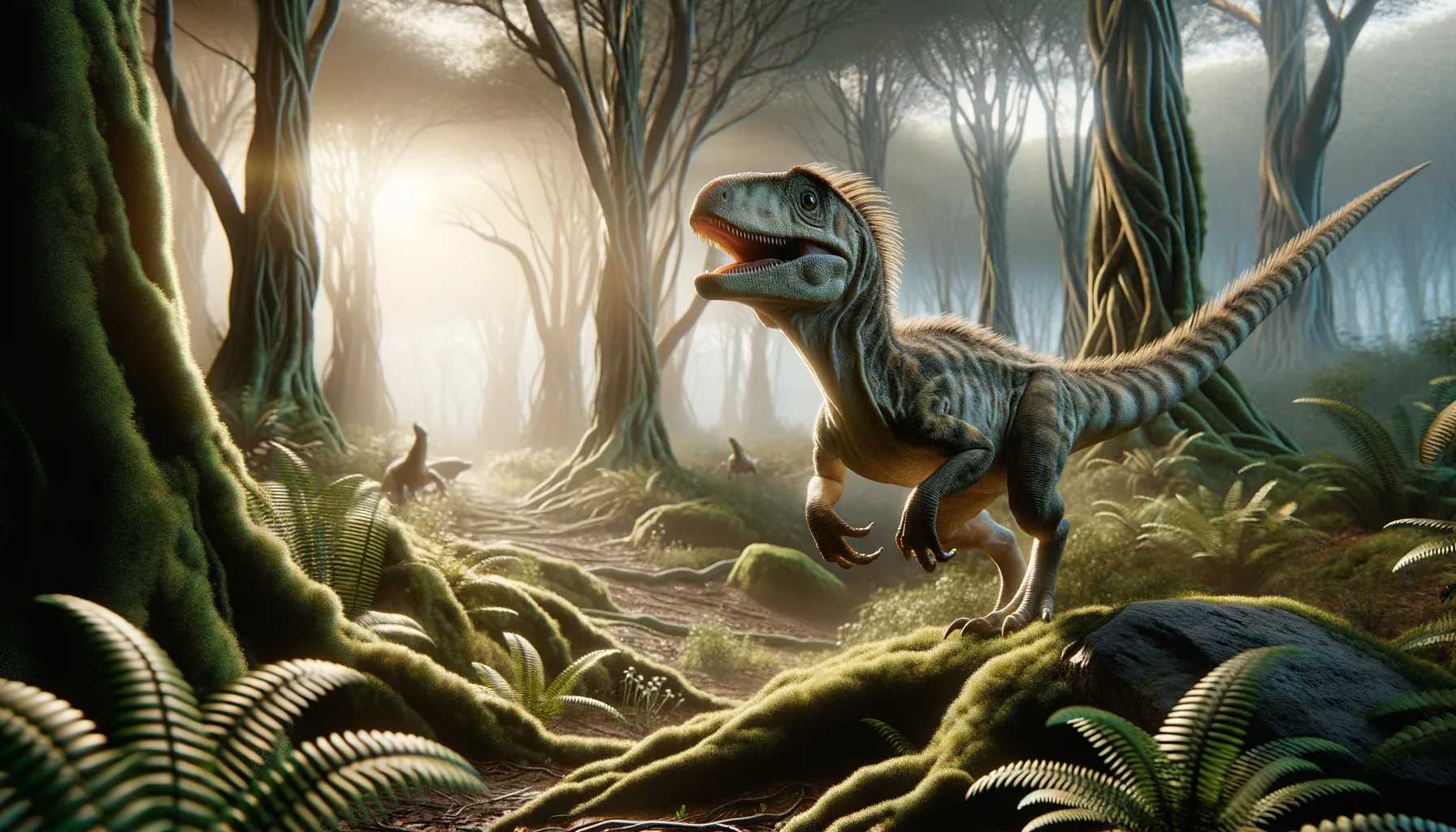
Lagerpeton
Swift strides of a Triassic trailblazer.
Period
Triassic
Length
About 3 feet long.
Height
Approximately 1 foot tall.
Weight
Around 2-4 pounds.
Lagerpeton was a small, agile reptile from the Triassic period. It is notable for its long hind limbs and unique, efficient gait, suggesting that early relatives of dinosaurs had developed advanced locomotion abilities. As a ground-dwelling animal, it likely relied on speed and agility to escape predators and hunt its prey in the dense forests of its time. Its skeletal structure provides crucial insights into the evolution of bipedalism in later dinosaurs.
Diet
Lagerpeton likely fed on insects and small vertebrates. Its agile movement and sharp reflexes would have made it an adept predator in its ecosystem.
Hunting
As an active hunter, Lagerpeton used its speed to capture small prey. Its ability to swiftly navigate the underbrush gave it an advantage in pursuing elusive insects and tiny reptiles.
Environmental challenges
Surviving in the Triassic required adapting to warm, seasonal climates and frequent droughts. Lagerpeton had to avoid larger predators while finding sufficient food in a competitive environment. Its small size may have forced it to constantly be on the move, looking for food and safe havens.
Speed
Relatively fast for its size, aiding in agility.
Lifespan
Lived for several years, typical for a small reptile.
First discovery
Discovered in the Ischigualasto Formation in Argentina.
Fun Facts
- Lagerpeton was a small dinosaur-like creature that lived roughly 237 million years ago during the Triassic period.
- This prehistoric animal is thought to have been a nimble and agile creature, possibly moving on two legs.
- Lagerpeton is known only from a few fossilized bones found in Argentina, but these have been enough to provide scientists with clues about its life.
- Unlike many of its later dinosaur relatives, Lagerpeton had long, slender legs, indicating it was a fast runner.
- Its name, Lagerpeton, means 'rabbit lizard', hinting at its ability to hop or make quick movements similar to a modern-day rabbit.
- Lagerpeton's discovery has helped paleontologists understand the early stages of dinosaur evolution.
- Despite its small size, Lagerpeton plays a big role in the story of how dinosaurs began to dominate the Earth.
Growth and Development
Lagerpeton likely had a rapid growth rate to quickly reach maturity. This fast development was possibly an adaptation to evade predators and take advantage of the resources in its habitats. Fossil evidence suggests that it maintained a relatively small size throughout its life.
Habitat
Lagerpeton lived in the warm, lush environments of the Triassic period, characterized by thick vegetation and diverse ecosystems. Its home regions would have been dotted with rivers, swamps, and dense forests, offering lots of opportunities for finding food and shelter. Seasonal variations may have influenced its behavior and movement patterns.
Interaction with other species
Lagerpeton likely had to compete with small reptiles and early mammals for food resources. It might have formed temporary alliances or groupings during foraging to protect against predators. Predation pressure from larger carnivorous reptiles probably influenced its behavior and evolutionary adaptations.
Natural lifespan
Lagerpeton likely lived for several years in the wild.
Reproduction
Lagerpeton reproduced through laying eggs, likely in safe, hidden nests. Maternal care is unlikely; young would have been quick and capable of surviving shortly after hatching. This reproductive strategy helped ensure species survival in predator-rich environments.
Social behaviour
Lagerpeton was likely a solitary creature, focusing on personal survival and hunting. During mating seasons, it might have interacted with others in finding a mate. Territorial behavior would have been minimal due to its small size and the need to remain agile and avoid predation.
Fossil locations
Lagerpeton fossils have been primarily found in Argentina, within the Ischigualasto Formation. This fossil-rich area provides crucial insights into early dinosaur and reptilian life. The findings highlight the diversity and geographic spread of proto-dinosaurs during the Triassic period.
